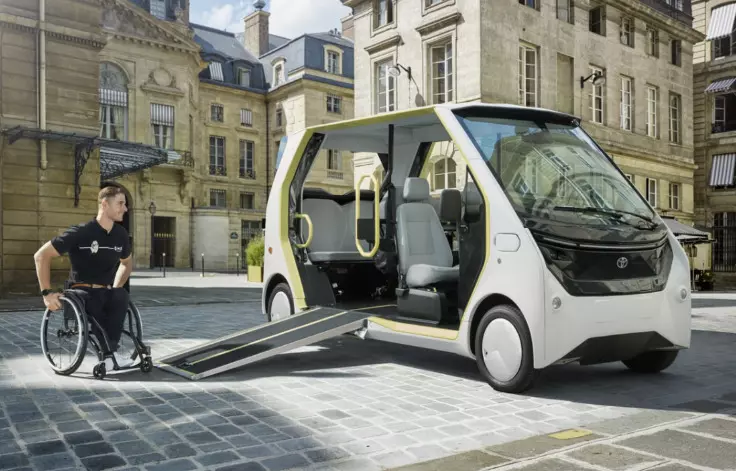What to Look for in a Vehicle Designed for Maximum Accessibility
image for illustrative purpose

Choosing the proper vehicle is more than selecting a model that looks great or encompasses a solid motor. For people with versatility challenges, the perfect vehicle must make travel feel easy and secure. It’s almost guaranteeing consolation, certainty, and flexibility.
As the need for wheelchair accessible transportation continues to grow, manufacturers are designing more thoughtful solutions. But what features make a car genuinely accessible? Let’s explore what matters most when considering a vehicle tailored for mobility support.
Interior Design and Space Efficiency
A car’s insides are more than fair to sit in. For somebody with restricted versatility, the space must work with their development, not against it.
Space that supports mobility needs
The bounty of room interior the cabin makes it less demanding to move around, but the plan plays a part even with part. Seats that lean back, slide, or crease are absent, offering adaptability for situating. The height between the situate and floor, or from floor to ceiling, can affect how simple it is to feel comfortable and secure.
A wide inside that maintains a strategic distance from tight corners makes a difference for people utilizing wheelchairs or walkers to feel at ease. Mindful dispersing turns a basic ride into a smoother, stress-free encounter.
Ease of Entry and Exit
Getting in and out of a vehicle is often the biggest challenge for many riders. A few inches here or there can make all the difference.
Entry without barriers
Wide-opening doors and sliding door systems are ideal for those who need extra clearance. Vehicles with lowered floors allow ramps to sit at a gentle angle, making it easier for wheelchairs to glide in without resistance.
Even for those who transfer from a mobility device into a car seat, a low step-in height and open footwells reduce effort. These features aren’t just nice to have, they shape how confident someone feels using the car every day.
Safety and Securement Features
Comfort is important, but nothing outweighs safety. A well-equipped accessible vehicle will always put user security at the center.
Stability for every journey
Proper securement systems ensure that wheelchairs and assistive devices remain stable in transit. Tie-down straps, anchoring points, and lap belts must be tested and easy to operate.
When these features are built directly into the vehicle design, they offer peace of mind. The goal is to allow riders to feel secure without relying on makeshift fixes or extra equipment.
Driving Aids and Control Options
For drivers with limited mobility, customized controls are not a luxury, they’re a necessity. These features can return a sense of independence behind the wheel.
Making driving possible and comfortable
Hand controls, pedal extenders, and joystick directing all permit drivers in particular must securely work their vehicle. Directing handles, push-button ignitions, and other add-ons can make long drives more reasonable.
The placement and feel of controls must match the driver’s strength and reach. Getting this right turns a basic vehicle into a dependable companion.
Comfort for Daily and Long Trips
Accessible doesn’t just mean functional. A car also needs to feel good to be in, especially on longer trips.
Comfort in the details
Padded seats, temperature control, and sound insulation create a more relaxed environment. Suspension that absorbs road bumps matters too, particularly for individuals who experience joint discomfort.
Every detail, from adjustable headrests to seat firmness, can affect someone’s experience. Vehicles that offer comfort without sacrificing access are often the ones people stick with long-term.
Maintenance and Long-Term Usability
When buying any vehicle, you also want to think beyond the first year. Will it still meet your needs down the line?
Thinking ahead
Vehicles with modular parts or adjustable layouts are easier to adapt over time. Some offer replaceable components or upgradable seating as mobility needs change.
Regular maintenance is also a factor. If your vehicle has powered lifts or ramps, look for brands that provide reliable servicing and accessible parts nationwide.
Parking and Everyday Function
Accessibility doesn’t stop once the car is parked. Real-world usability often shows where a vehicle truly performs.
Ease in daily routines
From curb cuts to compact parking spaces, your vehicle must adapt to daily obstacles. Side-entry access, powered doors, and flat thresholds all help in tight situations. Even interior lighting and handle placement can affect nighttime visibility and usability.
Think about how the car will be used in real life, not just how it looks on paper.
Thoughtful Features That Make a Difference
Beyond the standard elements, some features provide that final layer of ease and dignity. Among these, few are as impactful as a swivel car seat.
Supporting better transfers
A swivel car seat rotates outward, reducing the effort needed to transfer from a wheelchair or stand up from a seated position. This makes it a valuable addition for those with limited core strength or caregivers assisting loved ones.
Reducing physical strain
Transfers can be one of the most physically demanding parts of any trip. By turning the seat toward the door, the swivel car seat minimizes twisting and reaching, making movement feel natural and safe.
Promoting long-term independence
Over time, features like the swivel car seat help people remain active and mobile longer. They support aging bodies, reduce injuries, and maintain a level of independence many thought they had to give up.

